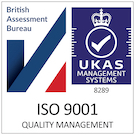
Posted: 27th June 2023
Cloud migration is the right move for many businesses with cost efficiency, productivity and cyber security benefits galore. So why are some businesses yet to make the move?
For many, the sheer scale of the move may feel too grand to handle: Where do you start? What are the downtime implications? Well, this guide could help.
The 6 steps to a successful cloud migration
We’ve called it ‘6 steps’ but there is a ‘pre’-step: Make sure you’re moving for the right reasons.
It’s important you don’t migrate to the cloud to follow the crowd. Do your research, speak with your IT specialist, and make sure your business will benefit.
That done – here’s what you need to do next.
#1. Assemble your team
Cloud migration involves more than just your CEO and IT leads. You need to consider the technology your teams work with and how they will be impacted. The best way to accommodate this is to involve project managers or department heads for insight into their needs.
Bringing in a cyber security specialist is also worth considering. Not all cloud service providers meet the same level of data governance compliance which is a big factor for regulation-driven industries. A bit of expert advice will give you that added confidence.
#2. Take stock of your infrastructure
Prior to cloud migration, you’ll need to do a full analysis of your IT infrastructure and tech. Look at all the apps your business uses, how they are used, how they integrate with each other, and, most importantly, their compatibility with your proposed cloud provider.
#3. Choose the right partners
Not all cloud providers are the same and some might be more compatible with your business than others. For example, many benefit from the flexibility of Microsoft Azure, whilst others prefer the user-friendly GCP. Factor in services and costs and choose the solution that’s right for your business.
Then you need to consider who will execute the cloud migration. If you have an in-house team with the necessary skills and experience (we always recommend hands-on experience), then perhaps having an IT consultancy service on-hand will give you that added safety net you need to feel comfortable carrying out the migration yourself.
Alternatively, bringing an MSP on board to plan, manage and execute the migration is the safest choice (it’s not a process you can YouTube!).
#4. Find direction
Be armed with a roadmap. The best way to migrate to the cloud is usually phased so you need to plan ahead. Decide the order IT components will shift across based on business priority whilst establishing milestones and budget along the way.
#5. Have a backup
Before you hit that button, think ‘backups’! To avoid data loss and unnecessary downtime, make sure you have a reliable and tested backup of all data.
Do you know the benefits of cloud backups?
#6. Explore your new environment
Cloud migration complete, it’s time to start using your new platform.
This should first be done in a test environment with IT leads to assess the functionality. It’s important you don’t rush this process. When you have absolute certainty everything is where it should be and working efficiently, you can make the final switch and say ‘goodbye’ to your old solution.
Jupiter IT – we’re invested in what’s right for your business
When it comes to large-scale IT projects, we can do everything from the planning to the execution for you, as well as any follow-up software training for your teams.
Don’t let tech hold your business back – get in touch today for a no-obligation evaluation of how we can improve and support your IT systems.








